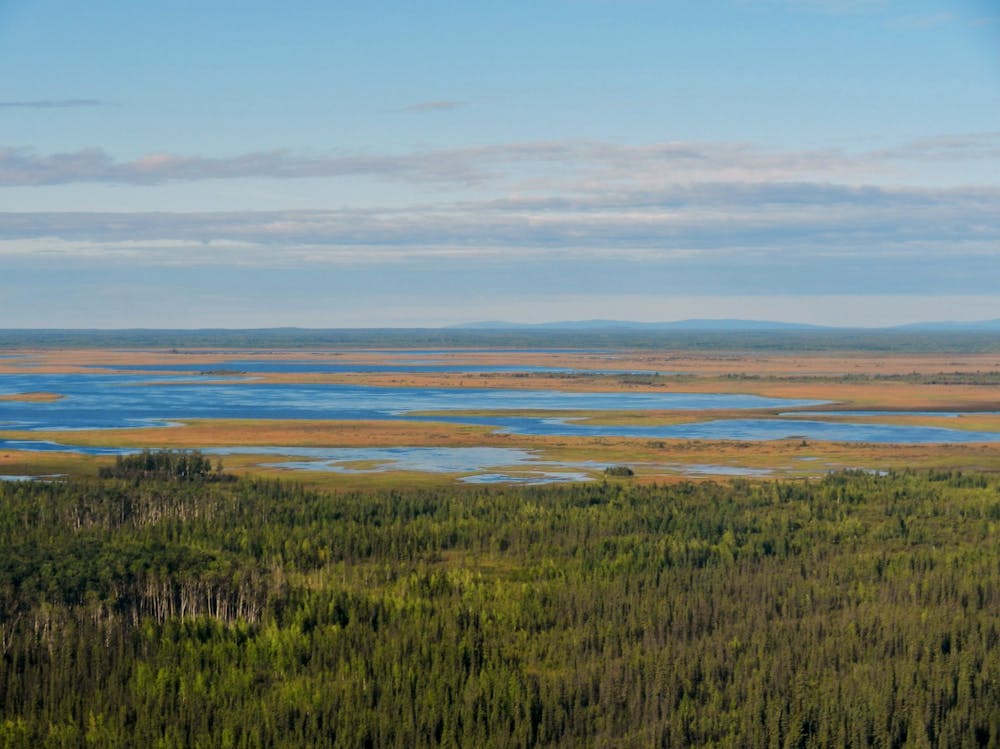As we approach the end of the semester, take a moment to read the latest news in science! News from this past week includes a climate policy for U.S. tribes, a new unearthed aquatic dinosaur and the use of technology in both military and police settings.
U.S. allocates $115 million for climate resilience to Native American tribes
President Joe Biden announced that the federal government will allocate resources and funds for the relocation of three Native American tribes facing dire environmental threats due to climate change. $25 million will be appropriated to each one of the tribes — the Newtok Village and Native Village of Napakiak in southwest Alaska and the Quinault Indian Nation located in Washington. These tribes, all in coastal regions, face the threat of rising water levels, flooding and substantial land erosion. Eight other tribes will receive $5 million in planning grants for climate change resilience. This funding is the first distributed from the 2021 Bipartisan Infrastructure Law and Inflation Reduction Act, which apportioned $216 million to the Bureau of Indian Affairs for tribal climate resilience and relocation.
Space Force missile detection satellite returns first data
The Millenium Space Systems, a Boeing subsidiary, claimed that the U.S. Space Force had successfully obtained images from the Wide Field of View (WFOV) missile warning satellite launched in July. A distinct feature of WFOV is its infrared sensor, which enables it to detect any ballistic missile launched from Earth using the heat emitted from missile engines. While WFOV still needs to be fully calibrated, the information it generates can be analyzed thoroughly at the Space Force’s Tools, Applications and Processing Lab in Boulder, Colo.
San Francisco advances approval of lethal force robots
San Francisco’s Board of Supervisors voted 8–3 to allow police forces to deploy robots capable of lethal force, including being authorized to explode in certain extreme situations. While the motion requires a second vote and approval by the mayor, those opposed to approving lethal force, including supervisors counter to the measure, are calling this move dangerous.
San Francisco Police Department Chief William Scott emphasized that only officers with specialized training will be allowed to control these robots, which are already in the police armory, and they will not be armed with firearms. They could be augmented with explosive charges to alleviate a situation when all other practical solutions and techniques have been attempted by police officers. Police use of a bomb-squad robot armed with explosives was previously implemented in 2016 by the Dallas Police Department to kill a shooter.
South Korean team excavates first well preserved aquatic dinosaur
A team led by Yuong-Nam Lee at South Korea’s Seoul National University unearthed the first non-avian dinosaur with a streamlined body similar to modern aquatic birds. Natovenator polydontus, discovered within the Hermiin Tsav formation in Mongolia’s Gobi Desert, is a therapod that lived during the Upper Cretaceous period spanning 100 million to 66 million years ago. Its skeletal features, most notably its posterior articulated dorsal ribs, form a compressed ribcage, which suggest that it possessed the capacity for swimming and likely hunted small fish in shallow waters. The researchers noted the similarity between Natovenator polydontus and modern aquatic bird species as a form of convergent evolution — with both forms of animals developing similar traits due to external environmental pressures. While other non-avian dinosaurs have been thought to have aquatic lifestyles, Natovenator polydontus marks the first clear and best-preserved example.





